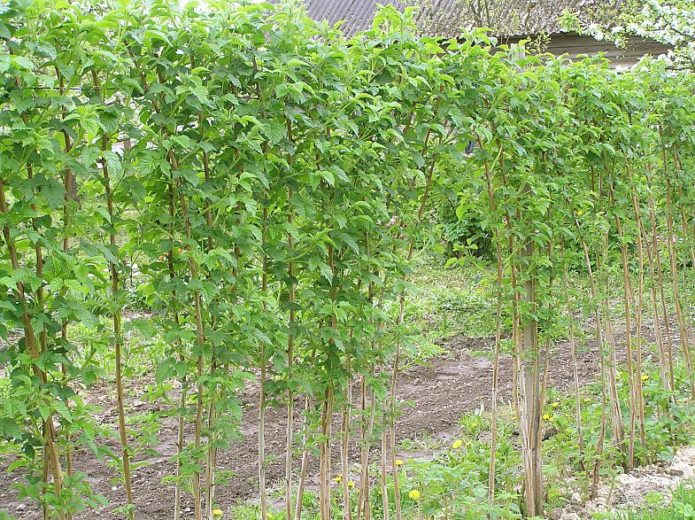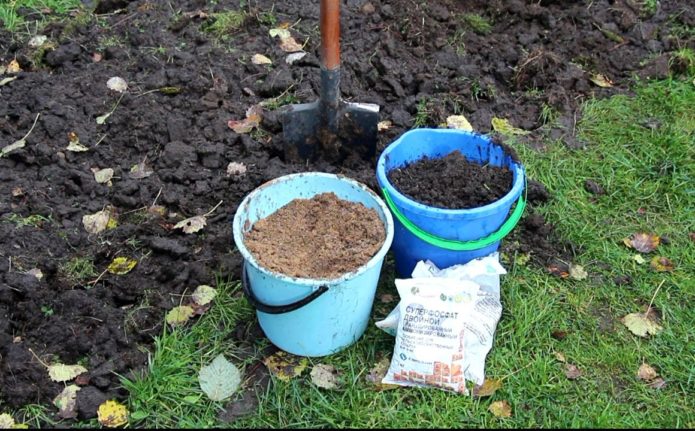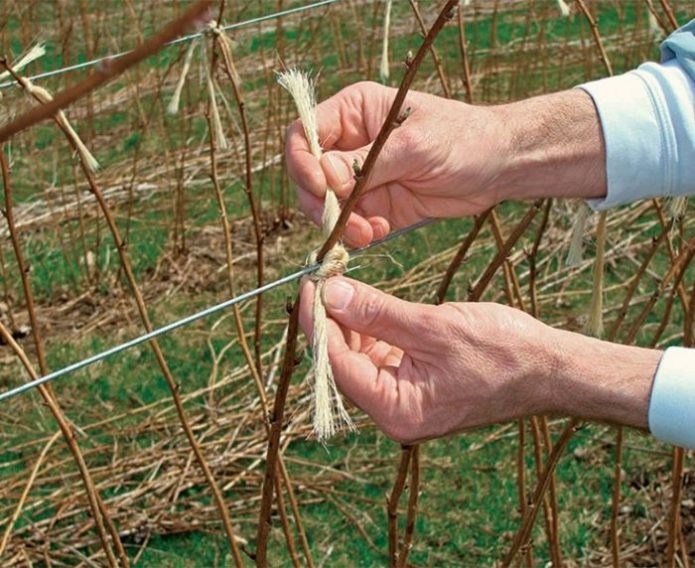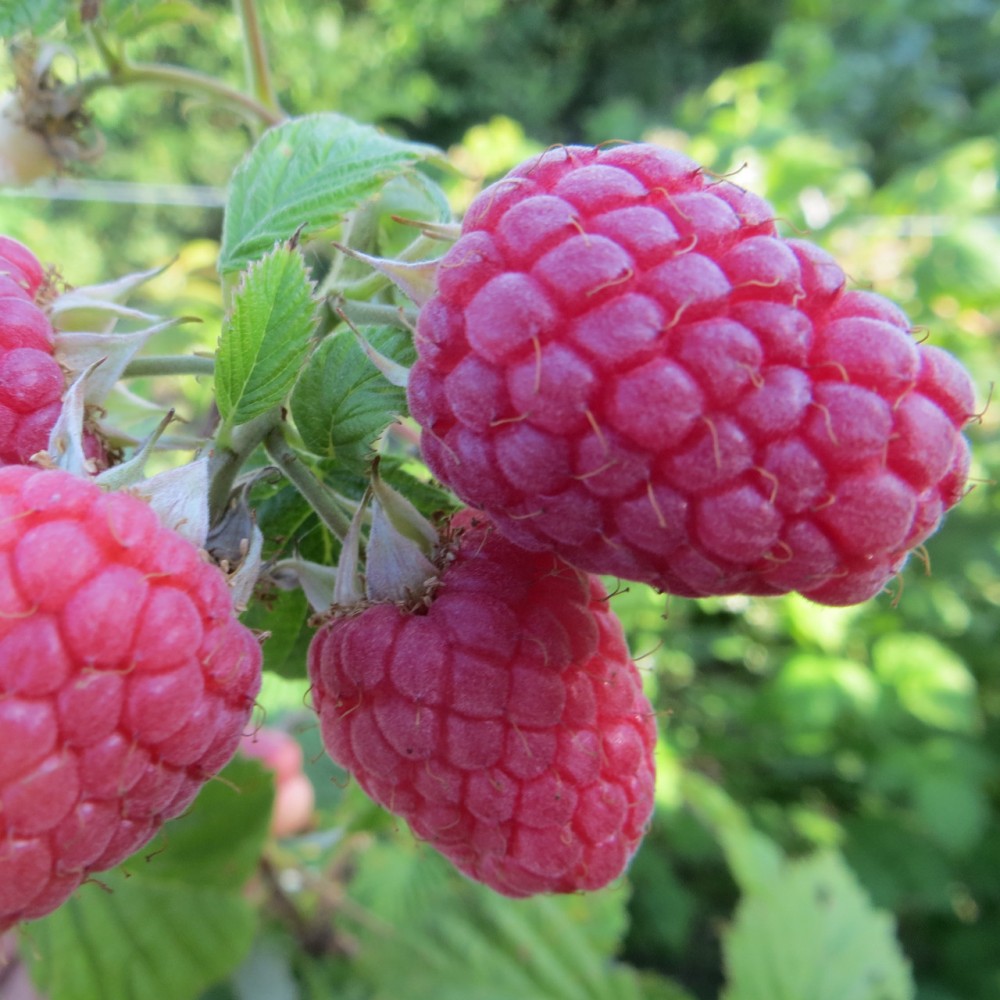Among some gardeners, the attitude to the word "remontant" as to something second-rate, not the most delicious, has taken root. Fortunately, this is not always true. Many varieties of berry bushes, being remontant, are in no way inferior to ordinary varieties in the quality and quantity of the crop. Very good reviews about the taste of remontant raspberry berries Firebird.
Content
Description of the raspberry variety Firebird
The repairing raspberry Firebird is considered one of the best varieties today, bearing fruit at a later date. However, its cultivation does not go smoothly everywhere, and problems occur.
Brief history of the variety
Raspberry the Firebird was included in the State Register of the Russian Federation only in 2008, but is already well known to both amateurs and specialists. The variety was bred in one of the branches of the Institute of Horticulture and Nursery, located in the village. Cinema of the Bryansk region. The author is I.V. Kazakov, known among agricultural specialists for his breeding activity. The variety is officially recommended for cultivation in all climatic regions of our country.
However, judging by the reviews "from the field", this raspberry does not feel great everywhere. Indeed, according to the official document, the variety is late, therefore, in the northernmost regions, the berries do not have time to fully ripen and acquire the entire bouquet of taste and aroma characteristic of the Firebird. Raspberries do not feel very well in the very south, where they often suffer from excessive heat. The harvest is best in the middle lane and regions identical to it in terms of climate.
Description of the plant and general characteristics of the variety
Raspberry of the Firebird variety grows in the form of tall, slightly spreading bushes, up to 2 meters, and requires support. Shoots are light brown in color with slight pubescence, covered with a small waxy bloom. Every year, each plant gives only 5-7 new shoots, but they are all full-fledged, that is, there is no need to remove excess growth. However, this is not very good for reproduction: planting material is scarce.
Thorns are greenish in color, of medium size, evenly distributed along the shoot. Leaves are medium in size, slightly edged, light green. Fruiting is observed throughout the stem, since from the ground to the crown, small branches appear on it, short lateral branches are formed.
The berries are beautiful, above average size, conical, mostly weighing 4.0–4.5 g, the largest - up to 6 g. The color is light red, shiny. Their pulp is very juicy, the taste is delicate, sweet and sour, the aroma is delicate, pleasant, the purpose is universal. Tasters rate the taste of fresh berries at 4 points, which is a very high rating in the case of remontant varieties.
The yield is quite high; in summer cottages, up to 2.5 kg of berries are harvested from each bush. The first ripe berries appear late, not earlier than the end of August. The berries are dense, do not crumple when picked and poured, suitable for mechanized harvesting, which makes it possible to grow these raspberries on an industrial scale, where the yield is estimated at 130 c / ha. The berries hold well on the branches, are transported without problems, they are stored in the refrigerator for 3 days.
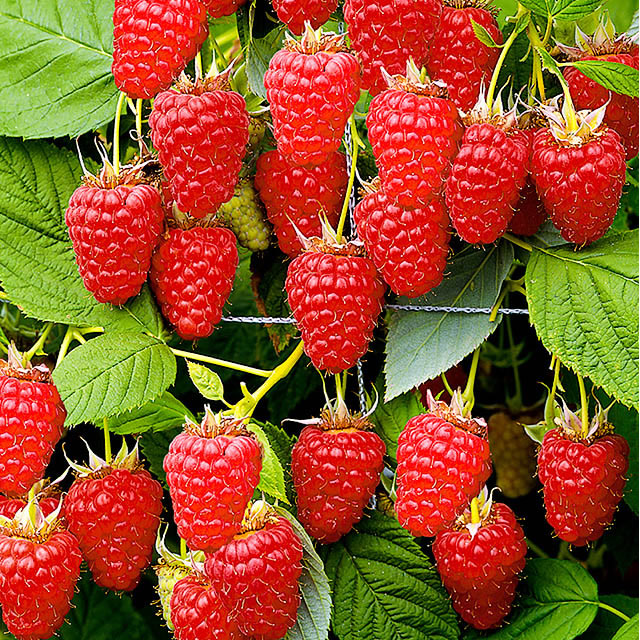
The berries are even, regular in shape, very beautiful, attracting both gardeners and buyers on the market
Disease resistance and resistance to pests at an average level or slightly higher. Frost resistance is normal, but in regions with an early arrival of cold weather, the yield is significantly reduced, since half of the berries that have emerged may not have time to mature. The variety does not tolerate extreme heat: at temperatures above 30 aboutFrom the shoots, starting from the leaves, gradually dry out.
The Firebird belongs to remontant varieties, that is, the berries are formed on annual shoots, which are usually completely mowed after harvest. In principle, overwintered shoots of such varieties also give a small harvest the next year. But in the Firebird, it is so small that the total yield over the summer from two harvests (on old and new shoots) will not be more than when only one full-fledged, autumn harvest is removed.
Features of agricultural technology raspberry Firebird
Planting the Firebird raspberry and caring for it is not more difficult than in the case of other remontant varieties, but in order to get the maximum possible yield, its features should be taken into account, related to the attitude to weather anomalies.
Landing
Any raspberry can be planted both in autumn and spring, but in autumn it is easier to do this, and the result is more reliable. With the correct spring planting, a good harvest of the Firebird can be harvested this year.
As a rule, the autumn planting of raspberries of this variety is preferred in the southern half of the country, and in the north, because of fears that the seedlings will not have time to take root before frost, they are more often planted in the spring.
The site should be well lit by the sun and be sheltered from the action of piercing winds. For the Firebird to give a full harvest, the soil must be very fertile, saturated with organic fertilizers. Too acidic soils are sure to lime. Long before planting, the entire area is carefully dug up, removing the rhizomes of perennial weeds. If a spring planting is planned, this is done in the fall, for an autumn planting - a few weeks before planting.
Fertilizers are best applied when digging a site. You can take a lot of humus: for each seedling there should be up to half a bucket, so a couple of buckets per square meter is normal. Wood ash - glass on the plant. You can also take mineral fertilizers (as a rule, superphosphate, potassium sulfate or complex fertilizers - azofosku), but without a sufficient amount of organic matter, the Firebird will grow poorly, and the yield will be poor.
The firebird is cultivated both in the form of separately located bushes, and in the form of a continuous row (strip). In the first case, a distance of at least a meter, and often 1.2–1.5 m, is maintained between the seedlings, and about 2.5 m between the rows. In the second, a common trench is dug and the seedlings are planted at a distance of about 50 cm or a little further (up to 70 cm) from each other. With trellis cultivation, the Firebird bushes are formed in such a way that the total feeding area per shoot will be approximately the same as with a sparse bush planting. They try to direct the rows from north to south, with subsequent leaving, the plants are formed in such a way that 8-10 shoots are located on each meter of the row.
Planting technology does not differ from other varieties. Before planting, the roots of the seedling are soaked in water for an hour. If the seedling got with a clod of earth, it is better not to destroy it. When digging trenches or individual holes (up to 25 cm deep), additional fertilizers are not applied.
It is necessary to take into account the degree of readiness of organic matter taken when digging a site.If it was not completely rotted manure, it is better to pour a layer of unfertilized soil between the fertilized soil and the roots of the seedlings.
The location of the seedling in the ground during planting is up to the root collar: it should not be buried. After planting, abundant watering (at least half a bucket of water per bush) and mulching with a layer of up to 10 cm are required. Immediately after this, the stems are cut, leaving about 30 cm. Regardless of the timing of planting, at first they arrange abundant watering of the raspberry plant. The soil should be moist to a depth of at least 35 cm.
Care
First of all, like any raspberry, the Firebird variety must be systematically watered, periodically loosened the soil and weeds. Its cultivation is not complete without mandatory feeding.
Top dressing
The first top dressing is carried out immediately after the soil thaws. During this period, nitrogen fertilizers are especially required for raspberries: you can water it with a solution containing 1 tbsp. a spoonful of urea in a bucket of water, or manure infusion (1:10). The bucket is poured into 1 running meter of a row or 2 bush with a focal arrangement of raspberries. At the same time, they slightly dig up the aisles, embedding mulch introduced in the fall into the soil, and again sprinkle humus in the raspberry bush.
When buds appear on new shoots, a second feeding is carried out. At this time, only phosphorus-potassium fertilizers and, preferably, trace elements are introduced. The easiest way is to generously supply the Firebird with wood ash, adding at least 0.5 liters under each bush.
In the fall, before the season closes, raspberries are fed with superphosphate and potassium sulfate (1–1.5 tablespoons per bush), embedded in grooves to a depth of 10–15 cm.
Garter
The shoots of the Firebird raspberry are very long and branched, so they intertwine and often lie on the ground, causing inconvenience when leaving. Therefore, plants need support. You have to drive in high stakes (at least 1.5 m), and between them pull a thick steel wire: the first row at a height of 50 cm, then every 30–40 cm. Shoots are attached to the wires with any twine as they grow back. This (trellis) method is suitable when the raspberries are grown in a continuous row.
If the raspberries are located in separate bushes, you can drive in a high strong stake when planting next to the seedling: shoots will form around it, and they are tied to the stake. Instead of strings, it is convenient to use plastic clamps available at garden supply stores.
Mowing annual shoots
Sometimes the Firebird raspberries are grown in the old fashioned way: the annual shoots are left after the end of the season. In the spring, sanitary pruning of frozen shoots is carried out to the first full-fledged unfrozen bud. Most gardeners act differently, giving the plants all their strength to form a single, but large harvest: autumn, on annual shoots.
Therefore, some time after collecting the last berries, that is, with the arrival of cold weather, all shoots are cut off near the ground, leaving almost no stumps. At the same time, fallen leaves and remaining weeds are raked up. Everything collected is burned: if the remains of raspberries are composted, then they are buried under a large layer of earth. The garden bed, on which there is nothing left, is covered with a thick layer of mulch for the winter (at least 10 cm of peat, humus or straw). If the winters in the region are harsh, cover with spunbond or coniferous spruce branches can be added.
Since the Firebird belongs to the late varieties in terms of fruiting, in the northern regions it is helped to harvest early.To do this, after the snow melts, they revise what is under the shelter, slightly loosen the bed, burying the mulch in the ground, and then again cover the aisles with spunbond in order to quickly warm up the ground well. They remove the shelter after the onset of real heat.
Harvesting
From the moment the first berries ripen to the collection of the last, if they have time to ripen, at least a month passes for the Firebird. Even in the warmest regions, a certain amount of berries can go into frost and fall under the snow. In order to collect the maximum amount of the harvest, the berries should not be allowed to hang on the bushes for too long: they are harvested daily or every other day. This stimulates the emergence and growth of the following.
The raspberries of the Firebird are quite strong: even when freezing and subsequent thawing, as well as when drying, they keep their shape. They are also suitable for any kind of processing, but they are mainly used for fresh consumption: at this autumn time there are almost no other berries, currants, strawberries, gooseberries and others have long gone, and viburnum with mountain ash is a little different. Therefore, the fruits of the Firebird are eaten with pleasure straight from the bush.
Video: tips for caring for remontant raspberries
Advantages and disadvantages of the variety in comparison with similar
Like all plants, the Firebird raspberry has advantages and disadvantages, but it has more of the former. The clear advantages of the variety include:
- very good berry taste;
- excellent presentation and good transportability;
- resistance of ripened berries to rain, non-shedding during ripening;
- high overall yield: shoots are covered with berries for almost their entire length;
- universal purpose;
- resistance to gray rot and other diseases;
- compactness of the plant: the bush gives little growth.
The disadvantages of the variety are:
- too late ripening, due to which part of the potential crop is lost, not having time to ripen;
- not very high frost and drought resistance;
- the need for tying;
- the difficulty of reproduction: gives few offspring.
The firebird differs from many varieties in that during active fruiting, the entire bush is strewn with berries almost from the ground, which really looks like the tail of a fairy bird. Compared to most remontant varieties, the Firebird is characterized by an increased sugar content of the berries.
Apparently, the variety should not be considered the best among the remontant varieties: each has its own undoubted advantages. So, for example, raspberry Penguin ripens very early and gradually yields a harvest throughout the summer, but even so, the overall yield is lower, much more acidic and berries. The tasting score of the Penguin berries is 3.7 points, which is slightly lower than that of the Firebird. The average yield is 89 c / ha (one and a half times lower). The rest of the parameters (drought resistance, attitude to diseases, purpose) are approximately at the same level. The apricot raspberry (4.5), which is considered one of the most fruitful, was awarded a higher rating by tasters than the Firebird. Both crops are usually harvested from it: in summer and late in autumn. But Apricot is a representative of the group of yellow-fruited raspberries and, apparently, it is not entirely correct to compare such varieties. Among the red-fruited varieties, in terms of the combination of advantages and disadvantages, the Atlant variety and, possibly, the Ruby Necklace are the closest to the Firebird.
Many varieties bred, like the Firebird, in the Bryansk region, are approximately equivalent in terms of a set of positive and negative properties. So, the Bryansk miracle gives even larger berries, but also ripens a little later. Bryansk Jubilee has a more extended period of fruiting (it starts producing berries from the end of July and ends by the onset of frost), but is more demanding on growing conditions: watering and feeding. Actually, tasters almost unanimously give Firebird the first place in terms of taste of berries among other remontant varieties. Some operational characteristics of a number of red-fruited varieties of remontant raspberries are given in the table.
Table - Yield characteristics of some red-fruited varieties of remontant raspberries
| Variety | Yield (kg / bush) | Berry weight (g) | Ripening terms |
| Atlant | 1–2 | 5–5,5 | End of August - October |
| Indian summer | 1–2 | 3–4 | The beginning of June is July. Early September - October |
| Bryansk miracle | 3–3,5 | 5–6 | September October |
| Bryansk jubilee | 2–3 | 3–4 | Mid July - September |
| Hercules | 2,5–3,5 | 5–7 | Mid June. August - early October |
| Firebird | 2–2,5 | 4–4,5 | End of August - October |
| Eurasia | 2–3 | 3,5–4,5 | Aug. Sept |
| Penguin | 1,5–2 | 4,5–5 | End of June - August |
| Polka | 2–3,5 | 5–6 | End of July - end of September |
| Ruby necklace | 2–3 | 4–5 | Mid August - October |
Reviews
Raspberries are self-fertile, you do not need to plant pollinators nearby. Cold frosts may not endure. I live in the central federal district near Bryansk, we have average winters. Once the temperature was up to -33 for a week. The raspberry was half dead, the branches were frozen, the roots of many bushes were also frozen. In the spring I had to rehabilitate. Cut off all the rot and dried twigs. I dug up the soil, fertilized. Spilled abundantly with phosphorus. There was almost no harvest. The same can happen due to drought. We went on a long vacation, no one watered the berry, the number of berries decreased by almost 3 times.
When the berries ripen, the bush resembles a flaming tail of a firebird, hence the name. Unlike regular varieties, this one is sprinkled with berries from top to bottom. It bears fruit 2 times. In October, before the frosts begin, I completely cut off the fruiting parts of the bushes with pruning shears. In the spring of the next year, new young shoots sprout from the ground, which are immediately capable of producing crops. Raspberries begin to ripen in late summer - early autumn. By performing this method of circumcision, most of the care problems are resolved on their own. For the winter, you should not bend and cover the bushes, there are enough snowdrifts.
The Firebird is a wonderful stable high-yielding variety. The berry is dense, does not become limp, not ripe already sweet, does not rot. One of my favorite varieties.
This variety feels great in the south, we are satisfied with both the first harvest and the second (without cutting off the shoots before winter). So don't be afraid, feel free to start. Dessert variety, from this it follows that the taste is quite wonderful.
It shows itself very well on our site! Always a big harvest, large berries, very tasty and beautiful. Collecting this is always very pleasant. Although there are many varieties of raspberries on the site, the Firebird is one of the leaders.
The Firebird is one of the best varieties of remontant raspberries, featuring an excellent berry flavor. The variety's relative disadvantages do not hinder its widespread popularity among both hobbyists and farmers who grow raspberries for sale. The agricultural technology of the variety is not more complicated than that of other varieties, which makes it possible to plant it almost everywhere.

